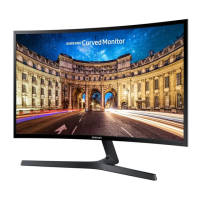
Do you have a question about the Samsung C24F394FH series and is the answer not in the manual?
| Panel Type | VA |
|---|---|
| Refresh Rate | 60 Hz |
| Aspect Ratio | 16:9 |
| Brightness | 250 cd/m² |
| Curvature | 1800R |
| Viewing Angle | 178°(H)/178°(V) |
| Power Consumption | 25W (Typical) |
| Screen Size | 23.5 inches |
| Resolution | 1920 x 1080 |
| Contrast Ratio | 3000:1 |
| Response Time | 4 ms |
| Connectivity | 1 x HDMI |
| VESA Mount Compatible | 75 x 75 mm |
| Color Support | 16.7M |
Ensures proper ventilation and prevents damage by specifying installation space requirements.
Advises on preventing damage from humidifiers and handling the screen carefully.
Provides step-by-step instructions for safely cleaning the monitor's panel and exterior.
Lists warnings and cautions for safe electrical connection and usage of the product.
Lists and identifies the various parts of the product for user familiarity.
Describes the control panel layout and its components for user interaction.
Explains the function of direct shortcut buttons for quick access to settings.
Details the function keys and how to navigate the on-screen menu.
Guides users on adjusting picture quality settings like brightness, contrast, and sharpness.
Explains how to adjust the audio volume for the monitor.
Illustrates the rear view of the monitor and its connection ports.
Provides instructions on how to adjust the monitor's tilt angle for optimal viewing.
Explains how to secure the product using an anti-theft locking device.
Offers essential guidelines for safely moving the monitor to prevent damage.
Details the process and considerations for mounting the monitor on a wall.
Lists VESA specifications and screw details for wall mounting the monitor.
Advises users to read manuals and check ports before connecting source devices.
Guides users on selecting connection methods for their PC.
Illustrates how to connect the monitor using a D-SUB analog cable.
Shows how to connect the monitor using HDMI or HDMI-DVI cables.
Illustrates the process of connecting the monitor via a DisplayPort cable.
Explains how to connect headphones to the monitor for audio output.
Provides instructions for connecting the monitor to a power source.
Provides guidelines for maintaining a correct posture while using the monitor.
Guides users on installing necessary drivers for optimal product performance.
Explains how to set the optimal screen resolution for the best viewing experience.
Provides optimum picture quality settings for various environments.
Explains how to adjust the general brightness level of the picture.
Guides users on adjusting the contrast between objects and background for clearer images.
Details how to adjust sharpness to make object outlines clearer or blurrier.
Explains how to adjust the tint and color temperature of the screen.
Describes a function that enhances picture details and vividness, especially for low-resolution images.
Explains how to adjust black levels for better image quality with HDMI connections.
Offers settings for eye relaxation by reducing blue light levels.
Guides users to configure screen settings for an optimal gaming experience.
Explains how to adjust panel response rate for smoother motion in videos and games.
Details how to change the picture size and aspect ratio for different content.
Covers manual adjustments for screen position, frequency, and fine-tuning.
Allows adjustment of the transparency level for menu windows.
Guides users on how to adjust the position of the on-screen menu.
Explains how to change the language of the on-screen menu display.
Sets the duration before the on-screen display menu automatically disappears.
Explains FreeSync technology for eliminating screen tearing during gameplay.
Describes a feature to reduce energy consumption by adjusting brightness levels.
Allows setting an automatic timer for the product to power off.
Guides on selecting PC or AV mode for optimal viewing of different content.
Explains how to automatically or manually detect the input signal source.
Allows control over the response rate of buttons when pressed.
Configures the settings to enable or disable the power LED indicator.
Restores all product settings to their default factory values.
Allows viewing current input source, frequency, and resolution.
Enables users to partition monitor screen sections for multitasking.
Lists the necessary OS and hardware specifications for software installation.
Highlights potential issues that may affect software installation.
Outlines pre-call checks and tests to perform before contacting support.
Guides users on how to test the product's functionality using built-in diagnostics.
Explains how to check and set appropriate resolution and frequency for optimal display.
Addresses problems related to the monitor's screen switching on/off or showing blank spaces.
Covers troubleshooting steps for screen issues like power LED off or 'Check Signal Cable' message.
Addresses issues like 'Not Optimum Mode', distorted, blurry, or unstable images and text.
Covers issues related to screen brightness, color inconsistency, and incorrect white balance.
Troubleshoots choppy video playback, sound problems, and source device audio issues.
Explains the meaning of no image and blinking power LED, and how to wake the screen.
Provides instructions for changing monitor frequency and resolution across different Windows versions.
Guides on configuring power-saving modes through Windows settings or BIOS.
Provides general specifications including model names, size, display area, and pixel pitch.
Explains the Plug-and-Play functionality for automatic monitor setup and optimization.
Addresses the nature of pixel variations and their impact on product performance.
Details conditions for service charges, including non-defect issues and customer-fault damage.
Differentiates between non-defect issues, customer-fault damage, and other situations incurring service fees.
Provides guidance on the environmentally safe disposal of the product and its accessories.
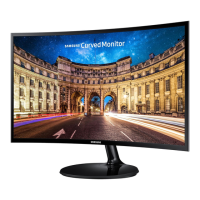
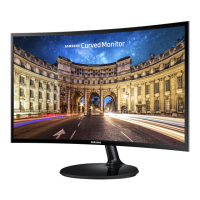
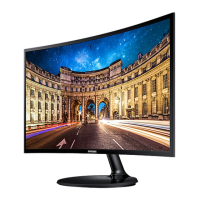
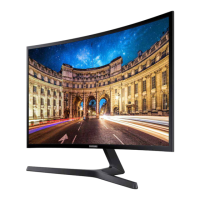
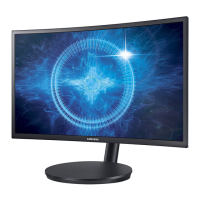

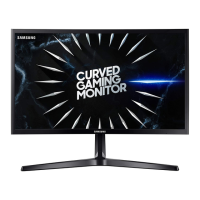
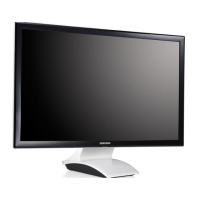

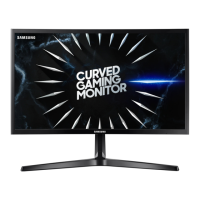
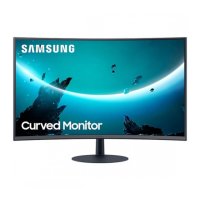
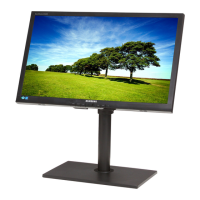
